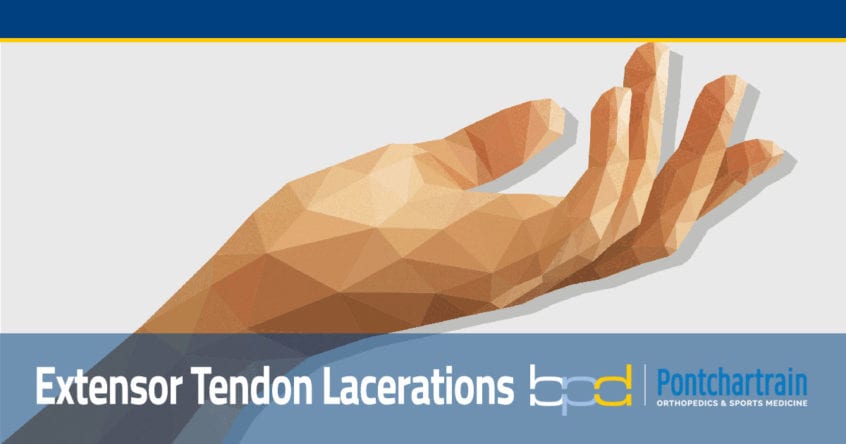What are Extensor Tendon Lacerations?
The extensor tendons lie on the back side of the hand and fingers. They attach muscles in the forearm to the finger bones and have the important job of extending or straightening the fingers. Extensor tendon lacerations can be caused by cuts or with crushing type injuries. When one or more of the tendons are injured, patients may experience the following symptoms:
What Causes Extensor Tendon Lacerations?
Extensor tendon lacerations occur when an object penetrates the tissues of the hand and severs the tendons on the back of the hand or fingers. This damage may be intentional or accidental, and often involves broken glass, jagged metal, or sharp tools.
Who is at Risk for Extensor Tendon Lacerations?
Those who suffer from conditions that weaken the tendons such as rheumatoid arthritis may be at risk of extensor tendon lacerations. Athletes are also at greater risk of suffering from injuries to the extensor tendons.
How are Extensor Tendon Lacerations Diagnosed?
Any injury or cut to the hand/wrist that results in the inability to move the finger should be evaluated by a hand specialist. Most times, a thorough history and physical examination can diagnose these injuries. X-rays are often used to evaluate bone injuries or foreign bodies in the cut. MRI or Ultrasound studies can be used to confirm the diagnosis or to evaluate the severity of the injury.
Treatment Options
Though partial tears to the extensor tendons may be healed using non-surgical methods, complete lacerations of the extensor tendons must be treated with surgery.
Non Surgical
Surgical
Dr. Donnelly will typically conduct minimally-invasive surgery to repair an extensor tendon laceration by suturing the tendons back together. Surgery should be conducted as soon as possible after an injury to ensure proper healing.
Recovery Time
Following surgery, the patient will wear a cast or splint for six weeks to protect the injured hand. The hand will require about three months to fully heal.

